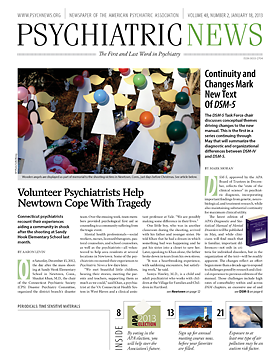Could exposure to traffic-related air pollution contribute to autism? A study published online November 26, 2012, in Archives of General Psychiatry and funded by the National Institute of Environmental Health Sciences suggests so.
Two years ago, Heather Volk, Ph.D., an assistant professor of research at the University of Southern California, and her colleagues found a provocative association between living near a freeway and autism. This association implied that traffic air pollution might be a culprit in autism.
They decided to conduct another study to test the hypothesis. The cohort included 279 preschool children with autism and 145 preschool children with typical development (controls). In addition to vehicle-emission rates, the researchers used local meteorological data, traffic volume, and road geometry to construct mathematical models of traffic-related air pollution in the areas where the subjects lived. The researchers then used the models as well as the addresses of the subjects to see whether they could find any links between traffic air pollution and autism.
They could. The children residing in areas with the highest levels of traffic air pollution were three times more likely to have autism than were the children residing in areas with the lowest levels. Moreover, the children with autism were twice as likely as controls to have been exposed to high levels of traffic air pollution during their mothers’ pregnancy and three times as likely as controls to have been exposed to high levels of traffic air pollution during the first year of life. Some specific traffic air pollutants—nitrogen dioxide and particulate matter—were likewise associated with autism during pregnancy and the first year of life. Finally, the findings remained solid even when demographic and socioeconomic factors as well as maternal smoking during pregnancy were considered.
“This study is a major contribution to the literature regarding factors potentially involved in the cause of autism,” Christopher McDougle, M.D., a professor of autism at Harvard Medical School, said during an interview. “While we know that genetic contributions exist, it is also clear that environmental factors are also important. To date, few environmental factors related to the cause of autism have been identified by rigorous scientific investigation.”
There are also some possible routes whereby traffic air pollution could lead to autism, McDougle pointed out. “Previous research has shown that concentrations of particulate air pollutants, such as polycyclic aromatic hydrocarbons, can reduce the expression of genes, including the MET receptor tyrosine kinase gene, which is important in early life neurodevelopment and is markedly reduced in the brains of people with autism. Traffic-related air pollution has also been shown to induce inflammation after both short- and long-term exposure. Emerging evidence demonstrates that inflammation may also be involved in some forms of autism.”
“We are currently studying whether genes involved in brain development and genes that help the body metabolize toxins interact with air pollution exposure to alter autism risk,” Volk told Psychiatric News. “We are also working to study whether there are particular time points when exposure may be important.” ■

